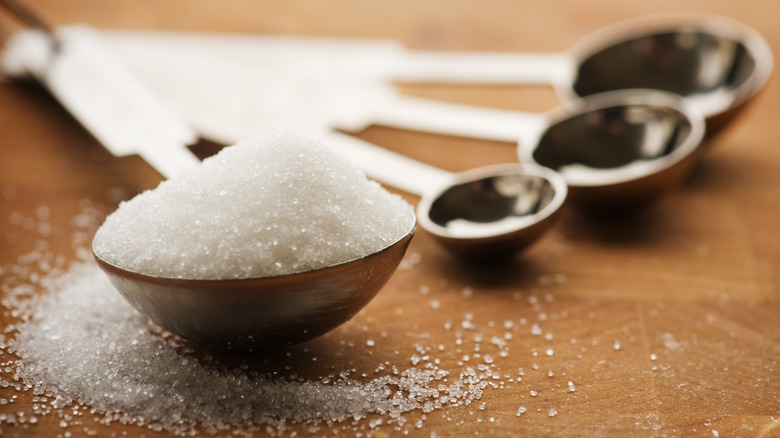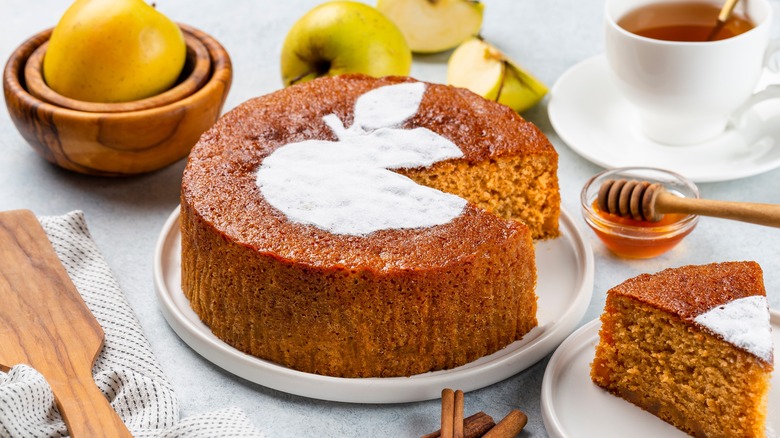Coat Cake Pans With Sugar To Get A Sweet, Caramelized Crust
In the culinary world, contrasting flavors and textures can turn an average meal into something with extra depth and complexity. Sweet with salty, chilled with warm, creamy with crunchy: These combinations can make for a truly out-of-this-world dish. In cake-baking, introducing a subtly crispy element to all the moistness is a sweetly surprising twist, and it's easy enough to achieve with the magic of a sugary crust.
Out of all the things you never thought to caramelize but should, the icing on your cake might be a delicious option that you've overlooked. While this method doesn't fully caramelize the sugar into a syrupy spread, it does toast the sugar just enough to create a thin, crackly outer layer that's simple to achieve with just a few basic ingredients.
One straightforward approach is to grease your baking pan as you normally would by using cooking spray or vegetable oil. If using butter, you may find that the sugar coating dissolves and won't yield any added texture. Instead of using a light dusting of flour to minimize sticking, add a generous spoonful of sugar and swirl the pan until it reaches every nook and cranny. While glazing is typically a process that happens once your cake has finished baking, adding a crunchy, sugar-based outer layer to the cake takes care of that step for you. There's also room for experimentation when it comes to this tasty baking tip.
Tips for making a sugar crust for your cake
Browning a layer of sugar doesn't merely add extra sweetness but also gives off a slightly bitter, nutty taste that caramel lovers know and love. While shaking a spoonful of granulated sugar over a greased baking dish is certainly the simplest way to give any bake a thin outer crust, there are going to be some over-achievers out there who take it a step further. When thinking about all the clever ingredients to level up your baking game, you might choose to spice up the glaze with other ingredients like vanilla-infused sugar, cinnamon, or lemon zest, rather than using plain sugar.
Granulated and caster sugar are the preferred types to use to create your crunchy sugar crust. Avoid using powdered confectioner's sugar, as it will just absorb into the cake. Better to save that for some decorative dusting once the cake cools. You could mix the sugar with cocoa powder before sprinkling it over the pan, which tends to work really well with chocolate cakes in particular. You don't have to stick with a regular cake pan, either. The surfaces of Bundt pans and cupcake tins work just as well. You can branch out from an average sponge cake and apply this easy trick, reminiscent of crème brûlée's crackly sugar topping, to other baked goods like cheesecakes and even homemade bread.

